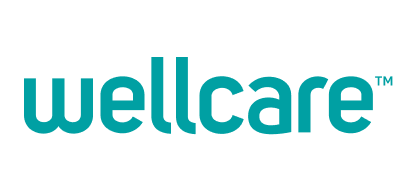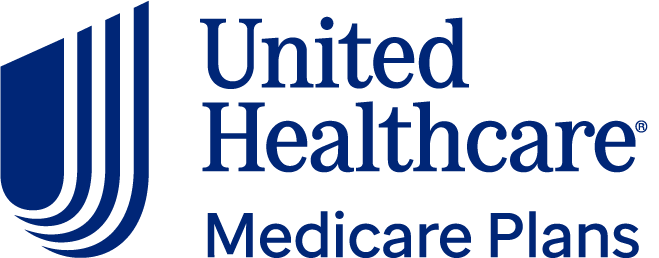2025 brings changes to Medicare, including a new $2,000 cap on out-of-pocket costs and an optional Medicare Prescription Payment Plan. There are also plans entering and leaving the market and changes to existing plans’ quality ratings, drug coverage and costs.
With these changes in mind, it’s smart to compare options for the Part D coverage that fits your needs. We analyzed plans covering over 90% of stand-alone Medicare Part D members to pick the best of 2025 based on cost, quality, member satisfaction and more.
Our picks: For 2025, Wellcare’s Value Script plan is available with $0 premiums in 42 states and Washington, D.C., and Wellcare outperforms most large competitors on government quality ratings. Humana Medicare Part D plans have also maintained solid ratings, especially on measures of member experience.
Why trust NerdWallet
45+ Medicare companies and brands analyzed by our team of experts.
30+ years of combined experience covering Medicare and personal finance.
Governed by NerdWallet's strict guidelines for editorial integrity.
NerdWallet’s Medicare content, including articles, reviews and recommendations, is produced by a team of writers and editors who specialize in Medicare. Their work has appeared in The Associated Press, Washington Post, Nasdaq, MSN, MarketWatch, Yahoo! Finance and other national and regional media outlets. They have been cited in publications including Healthline, and appeared on NerdWallet's "Smart Money" podcast.
Insurance company | CMS star rating | Out-of-pocket costs | Member experience | Learn more |
|---|---|---|---|---|
BEST FOR $0 PREMIUMS | (855) 432-0512 / TTY 711 M-F 9AM-9PM, Sat 10AM-6PM ETSpeak to a licensed insurance agent on askchapter.orgon NerdWallet | |||
 (855) 432-0512 / TTY 711 M-F 9AM-9PM, Sat 10AM-6PM ETSpeak to a licensed insurance agent on askchapter.orgon NerdWallet | 3.50 | 3.50/5 | Varies | 3.0 (Average) |
BEST FOR MEMBER EXPERIENCE | (855) 432-0512 / TTY 711 M-F 9AM-9PM, Sat 10AM-6PM ETSpeak to a licensed insurance agent on askchapter.orgon NerdWallet | |||
 (855) 432-0512 / TTY 711 M-F 9AM-9PM, Sat 10AM-6PM ETSpeak to a licensed insurance agent on askchapter.orgon NerdWallet | 3.49 | 3.49/5 | Varies | 4.46 (Above average) |
(855) 432-0512 / TTY 711 M-F 9AM-9PM, Sat 10AM-6PM ETSpeak to a licensed insurance agent on askchapter.orgon NerdWallet | ||||
 (855) 432-0512 / TTY 711 M-F 9AM-9PM, Sat 10AM-6PM ETSpeak to a licensed insurance agent on askchapter.orgon NerdWallet | 3.25 | 3.25/5 | Higher than average | 3.0 (Average) |
(855) 432-0512 / TTY 711 M-F 9AM-9PM, Sat 10AM-6PM ETSpeak to a licensed insurance agent on askchapter.orgon NerdWallet | ||||
 (855) 432-0512 / TTY 711 M-F 9AM-9PM, Sat 10AM-6PM ETSpeak to a licensed insurance agent on askchapter.orgon NerdWallet | 2.85 | 2.85/5 | Average | 2.87 (Average) |
Best for $0 premiums: Wellcare Medicare Part D

- $0-premium plans available in most states.
- Star ratings beat other national competitors.
- Coinsurance rather than copays for brand-name drugs could get pricey.
- Wellcare Value Plus plan no longer has a $0 deductible for all covered drugs.
Why we picked it: $0-premium plans may appeal to people on a fixed income or who are looking to minimize monthly medical costs.
Top quality measures that outperformed the national average:
Drug plan quality improvement.
Call center foreign language interpreter and TTY availability.
Statin use in persons with diabetes.
The bottom line: Wellcare has substantially expanded its $0-premium Medicare Part D plans in 2025, offering the Wellcare Value Script plan with $0 premiums in 42 states and Washington, D.C. And when it comes to quality, Wellcare's star ratings beat every major national competitor.
Pros
- $0-premium plans available in most states.
- Star ratings beat other national competitors.
Cons
- Coinsurance rather than copays for brand-name drugs could get pricey.
- Wellcare Value Plus plan no longer has a $0 deductible for all covered drugs.
» MORE: Read our review of Wellcare Medicare Part D insurance
Best for member experience: Humana Medicare Part D

- High scores for member experience.
- Generous $0-copay and $0-deductible options.
- High prices for the higher-end Premier plan.
- Poor scores for accuracy of drug price estimates.
Why we picked it: Humana Medicare Part D plans significantly outscore all major national competitors on government ratings measuring members’ experience using the plans to get their medications.
Top quality measures that outperformed the national average:
Getting needed prescription drugs.
Members’ rating of the drug plan.
Medication therapy management program completion rate for enrollees who received a comprehensive medication review.
The bottom line: Humana holds onto solid star ratings in 2025 while many other companies' scores have fallen. Its lower-cost Humana Value Rx plan offers more $0-copay and $0-deductible drug tiers than many competitors. Expensive premiums for the higher-end Premier Rx plan make that plan less competitive, however.
Pros
- High scores for member experience.
- Generous $0-copay and $0-deductible options.
Cons
- High prices for the higher-end Premier plan.
- Poor scores for accuracy of drug price estimates.
» MORE: Read our review of Humana Medicare Part D insurance
More Nerdy Perspective
Additional Medicare Part D companies
These providers may not excel in one particular area but are solid overall and may be the right fit for your medications and needs.
AARP Medicare Part D Plans from UnitedHealthcare

- Medicare Rx Preferred plan is less expensive than competing high-end plans.
- Simplified plan choices.
- Medicare Rx Saver plan is pricey for a lower-end plan.
- Below-average ratings for medication management.
- Only the higher-end Preferred plan has $0-copay options.
Top quality measures that outperformed the national average:
Medicare plan finder price accuracy.
Call center foreign language interpreter and TTY availability.
Few complaints about the drug plan.
The bottom line: AARP Medicare Rx plans from UnitedHealthcare are widely available, and the higher-end Medicare Rx Preferred plan costs less than major competitors’ similar plans. But AARP/UHC’s 2025 star ratings are a little below average, and high premiums for the Medicare Rx Saver plan make it a less competitive option.
Pros
- Medicare Rx Preferred plan is less expensive than competing high-end plans.
- Simplified plan choices.
Cons
- Medicare Rx Saver plan is pricey for a lower-end plan.
- Below-average ratings for medication management.
- Only the higher-end Preferred plan has $0-copay options.
» MORE: Read our review of AARP/UnitedHealthcare Medicare Part D insurance
December update
Medicare star ratings are typically released once per year, but CMS recalculated its 2025 star ratings for UnitedHealthcare in December 2024. Pursuant to a court order, CMS removed disputed data from the calculations. NerdWallet has updated this roundup accordingly.
Anthem Medicare Part D

- Members have few complaints and rarely choose to leave.
- Strong ratings for medication management.
- High premiums.
- Available in only 13 states.
Top quality measures that outperformed the national average:
Few members choosing to leave the plan.
Medication therapy management program completion rate for enrollees who received a comprehensive medication review.
Medication adherence for cholesterol (statins).
The bottom line: Anthem MediBlue Rx Medicare Part D plans have above-average ratings from the Centers for Medicare & Medicaid Services (CMS). Premiums are on the higher side, but Anthem’s Part D plans receive few complaints, and the plans score well for helping members get and take their medications.
Pros
- Members have few complaints and rarely choose to leave.
- Strong ratings for medication management.
Cons
- High premiums.
- Available in only 13 states.
» MORE: Read our review of Anthem Medicare Part D insurance
Cigna Medicare Part D

- Cigna Saver Rx is one of the cheapest Part D plans available.
- Every Part D plan offers at least Tier 1 drugs with $0 copays.
- Star ratings are slightly below average.
- Lowest copays might require ordering 90-day supplies by mail.
Top quality measures that outperformed the national average:
Medicare plan finder price accuracy.
Drug plan quality improvement.
Members’ rating of the drug plan.
The bottom line: Cigna Medicare Part D plans get slightly below-average star ratings in 2025. But Cigna also offers lower premiums than many competitors, especially for its low-cost Cigna Saver Rx plan. If a Cigna Medicare Part D plan covers your medications, it could be a good value.
Pros
- Cigna Saver Rx is one of the cheapest Part D plans available.
- Every Part D plan offers at least Tier 1 drugs with $0 copays.
Cons
- Star ratings are slightly below average.
- Lowest copays might require ordering 90-day supplies by mail.
» MORE: Read our review of Cigna Medicare Part D insurance
What’s the best way to compare Part D plans?
Unlike Medicare Part A and Part B, Part D plans are sold by private insurance companies, and the plans’ costs, benefits and other features can vary significantly. First, confirm whether a plan covers your prescription drugs, then consider each potential plan option’s strengths and weaknesses.
NerdWallet compares and chooses the best Medicare Part D plans based on factors including quality ratings from the Centers for Medicare & Medicaid Services (CMS), prices, cost-sharing requirements, formulary design and more. The best plans offer lower costs and higher ratings for quality and member satisfaction.
Find the right Medicare Part D prescription drug plan
The interactive tool on Medicare.gov can help you find a Medicare Part D plan that covers your prescriptions. It also helps you compare costs among Medicare Part D and Medicare Advantage plans available to you.
Here are some things to keep in mind when comparing plans:
Check the formulary: Make sure the medicines you currently take are covered. Talk to your health care providers about what medications to look for. You might also also want to check for possible alternatives and/or drugs you think you might need in the future.
Look for plan changes: Formularies (lists of covered drugs) change frequently. Your insurer should send you a Notice of Plan Change when the formulary changes. Read that document carefully.
Check the pharmacy network: Most Medicare Part D plans have networks of lower-cost pharmacies. Check to see if the plan's pharmacies are convenient for you. Also, compare prices for using mail order.
You can switch plans during Medicare's open enrollment period, Oct. 15 to Dec. 7. Changes go into effect on the following Jan. 1.
» MORE: How much does Medicare Part D cost
You may be eligible for Medicare plans during a special enrollment period if you are turning 65, new to Medicare plans, moving or losing coverage.
If you have additional questions about Medicare, visit Medicare.gov or call 800-MEDICARE (800-633-4227, TTY 877-486-2048).
Article sources
NerdWallet writers are subject matter authorities who use primary, trustworthy sources to inform their work, including peer-reviewed studies, government websites, academic research and interviews with industry experts. All content is fact-checked for accuracy, timeliness and relevance. You can learn more about NerdWallet's high standards for journalism by reading our editorial guidelines.
- 1.NerdWallet analysis of CMS data. 2025 Star Ratings Data Tables. Accessed Apr 17, 2025.
Medicare Part D plan review methodology
NerdWallet’s Medicare Part D reviews are based on ratings data from the Centers for Medicare & Medicaid Services (CMS), pricing, cost-sharing requirements, formulary design, consumer experience and more.
NerdWallet reviewed eight Medicare Part D insurance companies based on highest enrollment and greatest online search volume. Together, these eight companies cover about 92% of Medicare beneficiaries with stand-alone Medicare Part D plans, according to CMS data. We review at least five major Medicare Part D companies in every state in the United States.
These reviews are a guide, but we encourage you to shop around and compare several plans to find the best coverage and rate for you. NerdWallet does not receive compensation for any reviews. Read our editorial guidelines for additional information.

